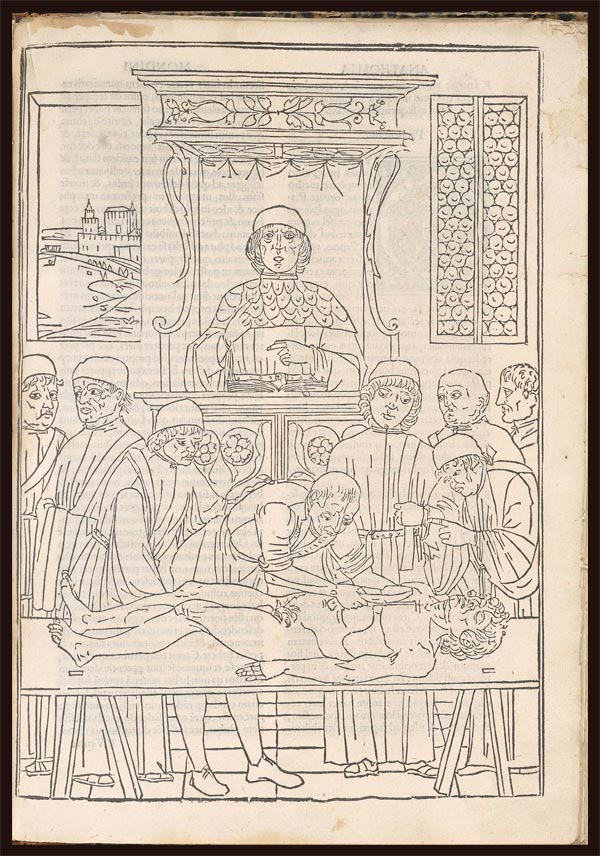The Dissection Lecture
The 1522 edition of the Fasciculus medicinae is a great example of how tradition and innovation overlap in many sixteenth-century medical books. While the texts gathered by Ketham are deeply rooted in the tradition of ancient and medieval medicine, they have been granted a new meaning by the inclusion of woodcuts that depict human figures realistically. For instance, the elegant design of the dissection is a typical product of the age, a composition characterized by subtly controlled movement and proportions. It describes, however, the ancient tradition of the physician being detached from the performance of the dissection itself, delegating this task to a surgeon-barber and an ostensor, seated at the back, who points out the relevant bodily parts for the benefit of the students.


